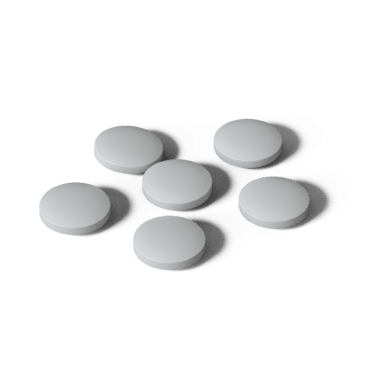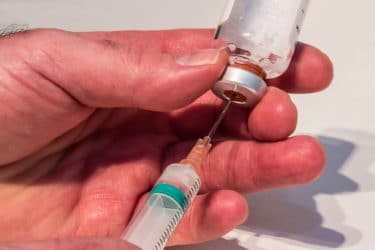Recent headlines have caused understandable anxiety among women regarding the possibility of becoming a victim of so-called spiking. While the phenomenon of spiking drinks has long been recognised, a newer, and arguably more sinister, form of spiking has dominated the headlines of late – that of spiking by injection. Here are just a few examples of such headlines. From the Open Access Government website on 20 October 2021: UK faces new drink spiking “epidemic” via injection to body; from the Glamour website on 3 November 2021: As police make their first arrests for suspected date rape by injection, here’s what it’s like to be spiked with a needle in a nightclub, and fear for your life; from the Evening Standard on 5 November 2021: ‘I was spiked by a needle on a university night out — clubs need to do more to protect young women’.
It’s no wonder that many women are terrified by this new threat, coming as it does in the context of extensive coverage of high-profile cases of women being murdered by men, including Sarah Everard and Sabina Nessa, and a greater awareness that there are dozens of other cases of women being murdered every year that do not get such extensive coverage. Some commentators, however, have expressed doubts regarding the scale of the threat posed by injection spiking. Indeed, some have questioned whether it is happening at all. If it is not, then a great deal of unnecessary anxiety has been caused by recent media reporting – and lessons from the past suggest that this is a real possibility.
The media has repeatedly raised the alarm regarding the alleged spiking of drinks, particularly in the context of drug-facilitated sexual assault (DFSA) or, as the media prefer to call it, ‘date rape’. It is claimed that the drinks of young women are routinely secretly spiked by strangers with drugs such as Rohypnol (the commercial name for flunitrazepam), gamma hydroxybutyrate (GHB), and ketamine. The drugs are said to render the victims helpless, in order to make it easier for the assailant to sexually assault them. The victims would typically have little or no memory of the assault once the effects of the drug had worn off.
That this threat is real and widespread has been widely accepted throughout society. For example, it has featured as a storyline over the years in every major British soap. It is perceived to be a particular threat on university campuses. Many websites offer advice to young women aimed at reducing the risk including that drinks should never be left unattended, drinks from strangers should never be accepted, and so on. This is yet another well-intentioned example of women being asked to change their behaviour in response to a problem perceived to be mainly the fault of men.

However, about a decade ago some commentators argued that this type of spiking of drinks was little more than an urban legend. The argument was that it either never happened at all or, if it did, it was extremely rare and the dangers it posed had been greatly exaggerated by the media. What was usually happening, it was claimed, was that young women were sometimes binge-drinking more than they realised, leaving themselves vulnerable to sexual predators. Thus Karen Weiss and Corey Colyer argued that the typical date rape crime narrative had “endured long beyond the typical crime story because it has been reified as an institutionalized and protected rape narrative that is oft-repeated and rarely challenged”. The Daily Mail ran a story presenting this perspective in 2009 under the patronising headline, “Date-Rape Drug? No Dear, You Just Had Too Much to Drink”.
More recently, in an attempt to find out more about this “much-discussed but under-researched phenomenon”, Suzanne Swan and colleagues surveyed over 6,000 students at three US universities regarding their experiences of drink spiking. Note that these investigators explicitly addressed the issue of drink spiking in general including, but not limited to, that which is presumed to be aimed at facilitating sexual assault. They found that more than one in 13 students reported having themselves been drugged and 1.4% of respondents reported that either they themselves or someone they knew had drugged someone else.
It struck me when reading this paper that the wording used may have led to the under-reporting of spiking involving one particular drug. For example, being or knowing a drugging perpetrator was assessed with the following item: “Since the beginning of [this academic year’s] fall term, have you or someone you know put drugs in someone else’s drink on purpose?” I wonder how many respondents would consider buying someone a double rather than the single gin and tonic they asked for as an example of spiking? But of course, strictly speaking it is – adding any drug to someone’s drink without their knowledge or consent, including extra alcohol, fits the definition of spiking and is not acceptable behaviour. I suspect that well over 1.4% of us have at some point witnessed such behaviour.
Regardless of that, the study produced some interesting results. As already stated, a sizeable minority of students reported that they believed that they themselves had been victims of drink spiking and a smaller percentage reported that they or someone they knew had spiked drinks. When questioned regarding the likely motivation for the act, women were more likely to report a sexual motive whereas men were more likely to report “for fun”. Women were more likely to believe that they were victims of drink spiking than men and were more likely than men to report negative outcomes such as sexual assault, getting sick, and blacking out. Swann and colleagues conclude that, “These data indicate that drugging is more than simply an ‘urban legend’.”
Of course, this study relied on self-report data with all of the limitations that that implies. We cannot know which, if any, students really were victims of drink spiking. A few toxicology studies have attempted to assess how many self-referred potential victims of drink spiking show evidence of having drugs (that they had not voluntarily taken) in their blood stream following the alleged spiking. Estimates vary widely, probably reflecting the many uncertainties that surround such forensic toxicology. For example, whereas Rohypnol can be detected up to three days after ingestion, GHB may be undetectable after a few hours. On the other hand, it may be that some respondents are understandably reluctant to report that they knowingly and voluntarily took illegal drugs, preferring to allow others to believe that they were drugged by a third party. Importantly, however, it should be noted that there definitely are cases of alleged drink spiking that are supported by the results of toxicological analysis.
This is still an under-researched topic and, as I hope I have shown, where data are available they are often hard to interpret due to the inherent uncertainties described. The overall impression that I came away with after my dip into the research literature was that drink spiking is a real phenomenon, albeit rarer than media coverage would suggest. The fears generated by excessive media coverage are, as with many other crimes, out of proportion to the actual threat but certainly understandable in the context of media reporting.
Returning to our consideration of injection spiking, I would argue that there are very good reasons to be much more doubtful that this is a real phenomenon at all. Of course, I may be wrong about that, and I would be happy to acknowledge that should any future toxicological analysis prove me to be so. However, as far as I am aware, no such evidence has been found to date.
The practicalities of such a crime would also seem to argue against it happening. Whereas one would imagine it is relatively easy to slip a pill into someone’s drink when they are not looking, to inject someone with a drug is much more likely to be spotted either by the victim or by someone else in the vicinity. It is, after all, a process that would probably take at least a few seconds to complete.

The reports of feeling a sharp pain are more likely to be due to, say, insect bites or other mundane causes than to surreptitious injection. There are equally mundane explanations for the discovery of marks on the body, such as bruising. When we have no reason to examine our bodies for evidence of anything out of the ordinary, we fail to notice everyday bumps, bruises and grazes; when we have motivation to look, we are less likely to overlook such mundane marks. This is a phenomenon we see among groups like those who claim to have been abducted by aliens, where any mark of unknown origin that they find on their bodies is taken as evidence of the medical intervention by extraterrestials they were already primed to believe occurred.
Historically, there have been innumerable examples of collective delusions and panics, some of which do bear some similarity to the panic over injection spiking. For example, hardly a year goes by without outbreaks of mass hysteria, often in schools, during which a range of symptoms, including fainting, headaches, and nausea, are reported by numerous individuals in the complete absence of any identifiable physical cause.
If the threat of spiking by injection is indeed imaginary… it risks diverting attention and resources away from tackling the very real threats of male violence against women
Similar symptoms have been reported in association with alleged attacks by “mad gassers”, such as the panics in Botetourt and Roanoke Counties, Virginia, in 1933-34 and Mattoon, Illinois, in 1944. In some cases, such as the Halifax Slasher in 1938 and the Phantom Slasher of Taipai in 1956, marks on alleged victims’ bodies and/or damage to clothing with mundane causes were misinterpreted as evidence of crazed, razor-wielding maniacs. In 1923, several people complained of being stabbed with a hat pin, with one suspect being arrested and subsequently released. In all of these cases, it was ultimately concluded that the assailants were imaginary and the panics were largely caused by sensationalistic reports in the media.
If the threat of spiking by injection is indeed imaginary, it is not only causing unnecessary stress and anxiety, especially amongst young women, but it risks diverting attention and resources away from tackling the very real threats of male violence against women that continue to plague society.



